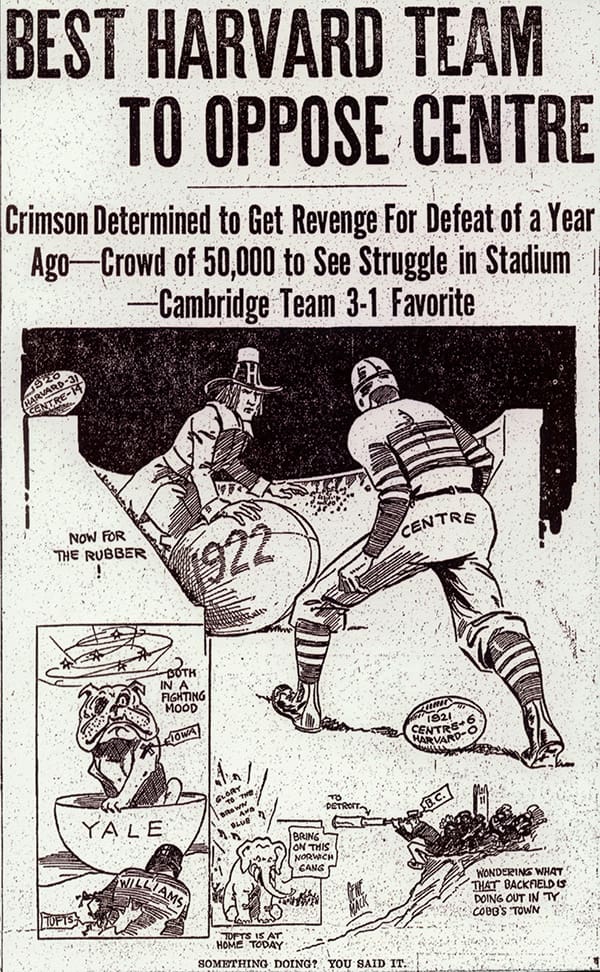Harvard Announces Its Lineup
Harvard was a team of stars. After all, Harvard was Harvard. Four young men stood out.
The team captain and quarterback was senior Charles Chauncey Buell, the young man who had missed the prior week's Bowdoin game in order to scout the Colonels in Richmond.

Charles Buell
Buell was the typical Harvard man.
He was born on January 21, 1900 in Hartford, Connecticut, and prepped at the Pomfret School in Pomfret, Connecticut, some 40 miles east of his home. Buell was the captain of the freshman baseball team, and was on the varsity team during his sophomore and junior years. His senior year marked his 3rd season on the varsity football team.
In addition to his athletic activities, Buell was a member of the student council his sophomore and junior years, was elected sophomore class president, served on the athletic committee in 1922-23, and was Second Marshall his senior year. Buell was a member of the A.D. Club, Institute of 1770, the S.K. Club, and his fraternity was Delta Kappa Epsilon.
George Owen, another senior, was the starting fullback, weighed 185 pounds, and was considered by many to be Harvard's greatest athlete. Owen was born in Hamilton, Ontario, and moved to Massachusetts as a teenager.
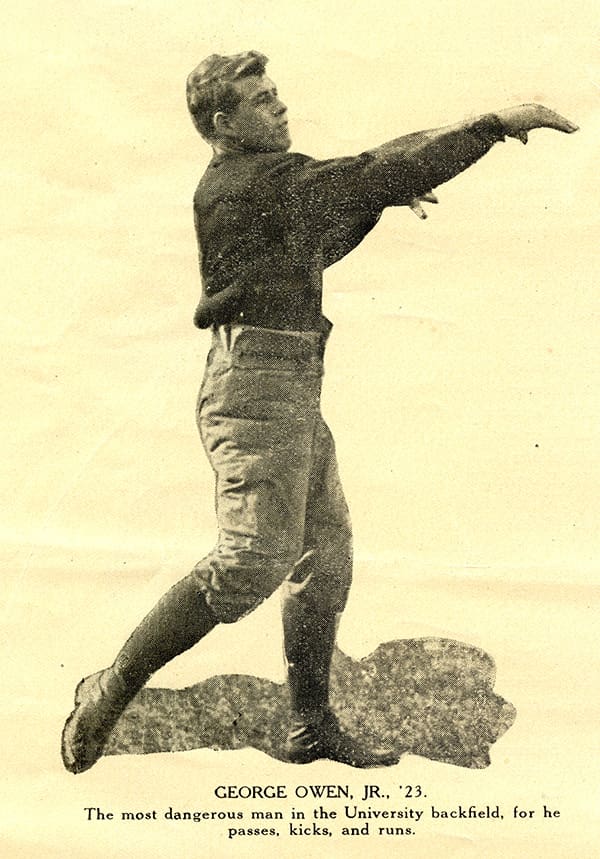
George Owen
Owen was a nine-letter winner, supreme in three years of stardom in football, hockey and baseball. In football he helped beat Yale three times, scoring a touchdown and field goal in the 10-3 triumph in 1921, and the only touchdown in the 1922 victory by the same score. Owen twice captained hockey, never lost to Yale, scoring nine goals in eight games against the Elis, including one in overtime to win a 1923 game. In baseball, he was the only player in history to win the Wingate Memorial Trophy three times. Owen also won the Wendell Bat. He went on to lead the Boston Bruins to the Stanley Cup, emblematic of the world's professional hockey championship.
Charles Hubbard was a 195 lb. junior guard who was playing at an All-American caliber. Hubbard was from Milton, Massachusetts and prepped at Milton Academy.
Hubbard was placed on Walter Camp's All-American teams in 1922 and 1923. He lettered in crew his junior year, rowing #5.
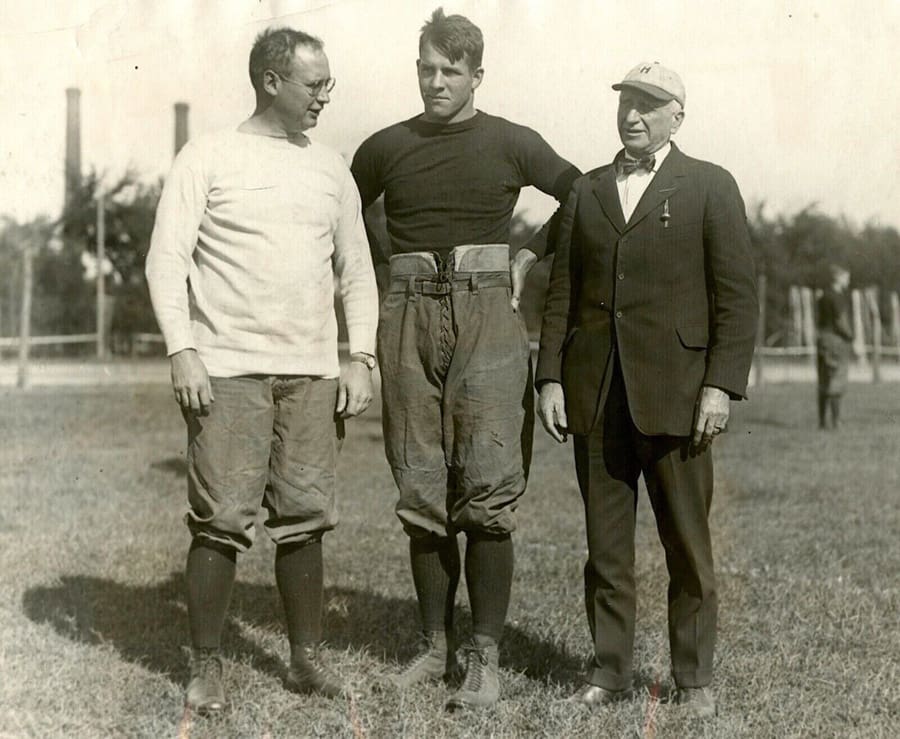
Coach Bob Fisher, junior guard Charles Hubbard, Head Trainer Pooch Donovan
Henry W. Clark played far beyond what his relatively small 175 pound size would have seemed possible. Clark was born in Alaska and prepped at Phillips Exeter Academy before enrolling at Stanford in 1918. His education was interrupted when he entered the army as a second lieutenant in the Great War. After leaving the army, he transferred to Harvard as a member of the class of 1923.
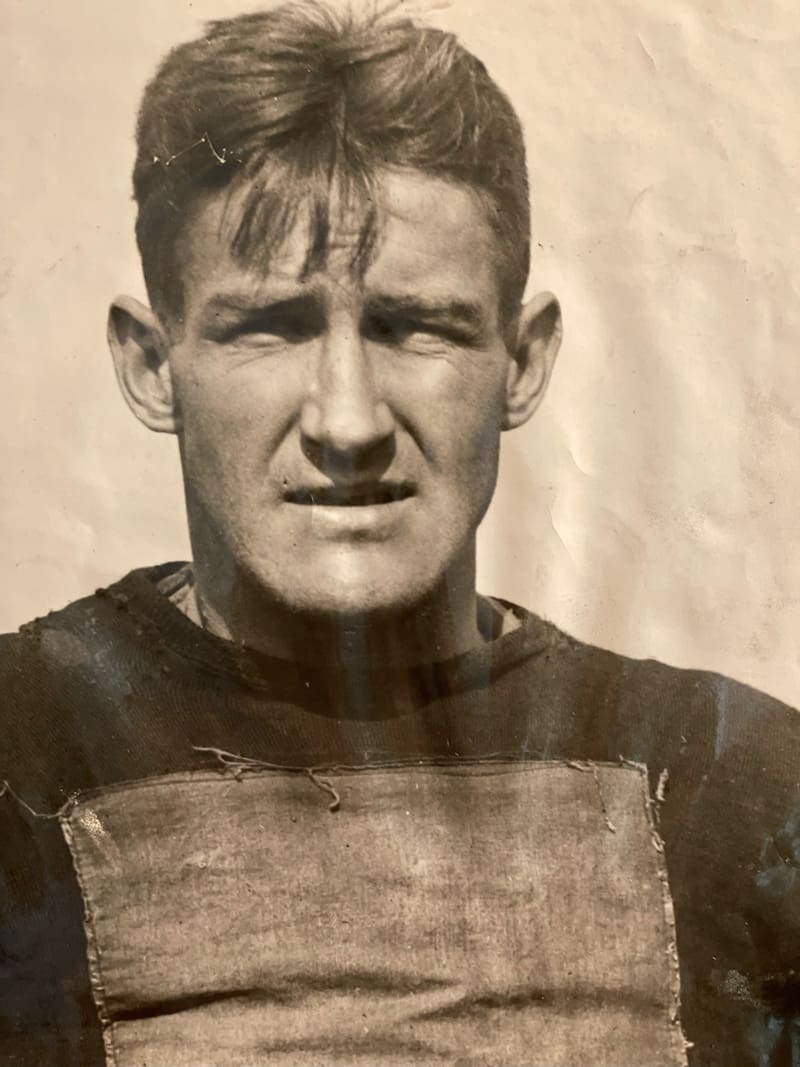
Crimson senior center, H.W. Clark
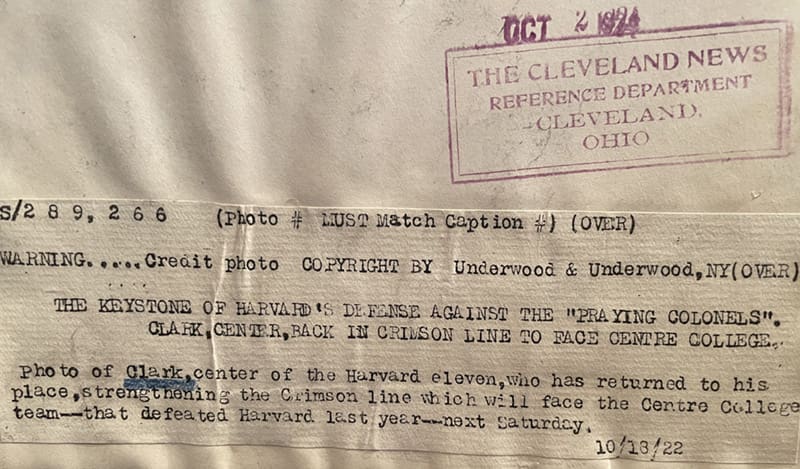
Caption of press photo of Clark describing him as-The Keystone of Harvard's defense against the "Praying Colonels".
THE STARTING LINEUP THAT COACH FISHER PLANNED TO SEND ONTO THE FIELD AGAINST CENTRE WAS:
NAME POSITION HT. WT. CLASS
R.W. Fitts Rt. end 5' 11" 180 Sr.
H.T. Dunker Rt. tackle 6' 1" 187 Soph.
CJ. Hubbard Rt. guard 6'2" 195 Jr.
H.S. Clark Center 6' 175 Sr.
H.S. Grew Lt. guard 5'11" 209 Jr.
C.A.C. Eastman Lt. tackle 6' 200 Jr.
J.M. Hartley Lt. end 5'8" 165 Sr.
C.C. Buell Quarterback 5'9" 160 Sr.
Vinton Chapin Rt. half 5' 10" 165 Sr.
Edwin Gehrke Lt. half 5'11" 182 Jr.
George Owen Fullback 5'11" 185 Sr.
It was an experienced team with 6 seniors, 4 juniors and only 1 sophomore.
The line would average 187 lbs., the backs 173 lbs., and the team 182 lbs.
Some had accused Coach Fisher of holding back in 1921, saving his team for later engagements, even though there is no definite evidence that he did in fact. His lineup in 1921 was influenced by injuries in the previous tough Penn State game and his desire to get more strength into his offense. However, in 1922 there was going to be no possible way that anyone could even claim that Harvard wasn't entering the Centre game with all guns firing to the maximum. Going into the Centre contest, Harvard hadn't lost 2 straight games to a team since the Percy Haughton era began in 1908. Bob Fisher didn't plan to do anything other than keep that record intact.
